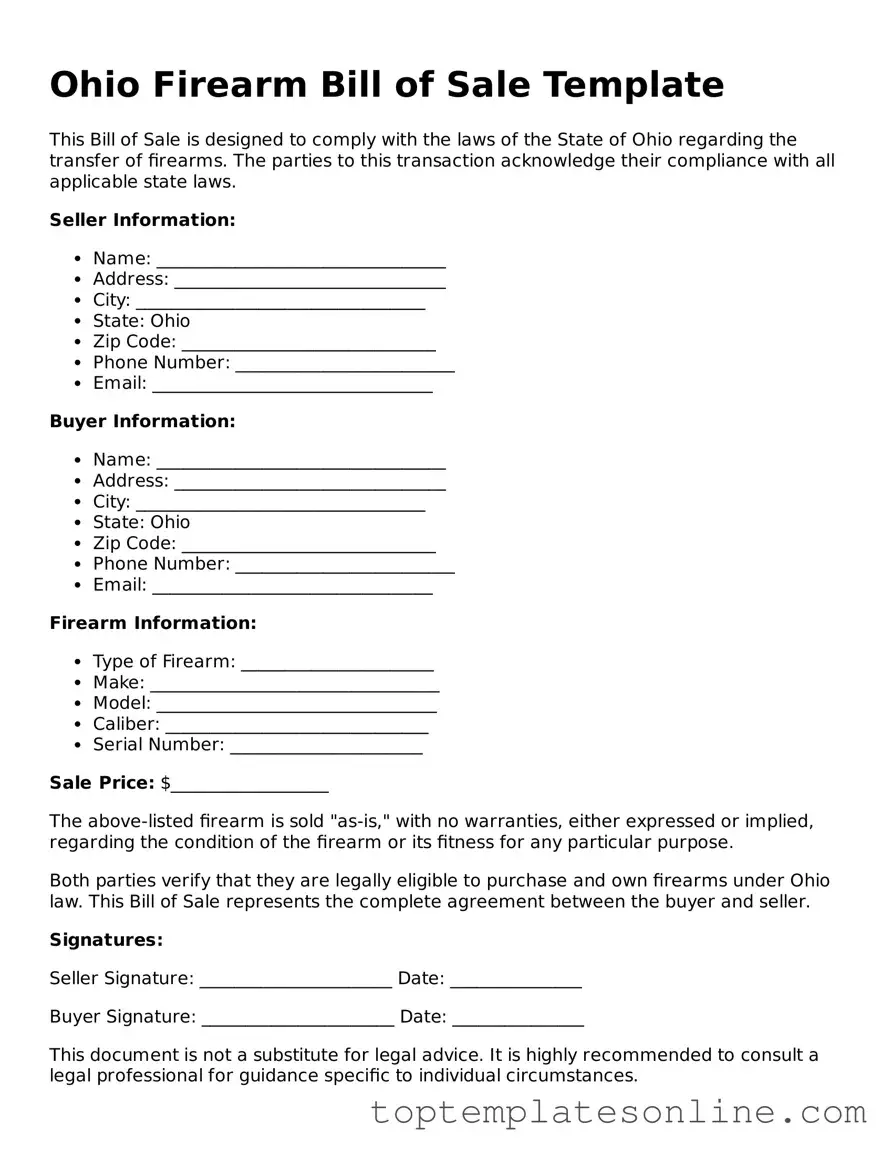Blank Firearm Bill of Sale Template for Ohio State
The Ohio Firearm Bill of Sale form is a legal document that records the sale or transfer of a firearm between two parties. This form serves as proof of ownership and ensures compliance with state laws regarding firearm transactions. Understanding this document is essential for both buyers and sellers to protect their rights and responsibilities.
Customize Firearm Bill of Sale Here
